Infrastructural gaslighting and the crisis of participatory planning - paper by Ass. Prof Crystal Legacy
From a paper by By Crystal Legacy (Assoc. Prof. In Urban Planning , Univ. of Melbourne)
From a paper by By Crystal Legacy (Assoc. Prof. In Urban Planning , Univ. of Melbourne)
 We publish the joint statement here. Unfortunately these two bodies, in our opinion, whilst obviously well-meaning, have entirely neglected the demand side of the equation. They are comforting the property developers' agenda of densification when they should be pointing out that this is an abuse of power that depends on a false narrative confining all discussion to the 'supply' side.
We publish the joint statement here. Unfortunately these two bodies, in our opinion, whilst obviously well-meaning, have entirely neglected the demand side of the equation. They are comforting the property developers' agenda of densification when they should be pointing out that this is an abuse of power that depends on a false narrative confining all discussion to the 'supply' side.
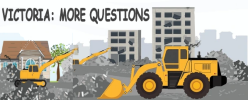 In a sequel to the Victorian Inquiry into planning Amendments VC257, VC267 and VC274, today 18 June 2025, Dave Davis (Liberal) put a motion requiring the Victorian State Government provide within three weeks very important documents required of it by the Inquiry Committee.[1] These documents would reveal the basis, actors, and rationale behind drastic cha
In a sequel to the Victorian Inquiry into planning Amendments VC257, VC267 and VC274, today 18 June 2025, Dave Davis (Liberal) put a motion requiring the Victorian State Government provide within three weeks very important documents required of it by the Inquiry Committee.[1] These documents would reveal the basis, actors, and rationale behind drastic cha
 Some wealthy homemakers are being allowed to do the opposite of what the rest of us are being told to do. They have been given permission to turn an area where there were six households into one - theirs. Such significant destruction and prioritization of certain interests in the face of so much homelessness and the loss of democracy for all Victorians through authoritarian planning is shocking.
Some wealthy homemakers are being allowed to do the opposite of what the rest of us are being told to do. They have been given permission to turn an area where there were six households into one - theirs. Such significant destruction and prioritization of certain interests in the face of so much homelessness and the loss of democracy for all Victorians through authoritarian planning is shocking.
 A few weeks ago, cross-benchers got together with the Liberals to conduct an inquiry into the legitimacy of State Labor Government Victoria's new planning laws that underpin the authoritarian creation of massive new 'activity centres,' infilling, hyper-densification, and removal of residents' rights to affect and discuss and dispute what happens where they live. The Inquiry found
A few weeks ago, cross-benchers got together with the Liberals to conduct an inquiry into the legitimacy of State Labor Government Victoria's new planning laws that underpin the authoritarian creation of massive new 'activity centres,' infilling, hyper-densification, and removal of residents' rights to affect and discuss and dispute what happens where they live. The Inquiry found
 I was not the only one sitting up late last night, writing to various members of the Victorian Legislative Council. There are about 55 neighborhood groups, many councils and other bodies, all trying to stop what is going ahead. They have been involved in this battle for a long time. In the absence of any reasonable information and consultation, neighborhood groups have been writing and distributing their own information about what Planning is about to do.
I was not the only one sitting up late last night, writing to various members of the Victorian Legislative Council. There are about 55 neighborhood groups, many councils and other bodies, all trying to stop what is going ahead. They have been involved in this battle for a long time. In the absence of any reasonable information and consultation, neighborhood groups have been writing and distributing their own information about what Planning is about to do.
This report came out today in the Legislative Council, Victoria. Non-Labor members of the Committee criticised the amendments for failing to consult the community as they are required to by law, and found that they contain little or nothing that would provide the much-claimed affordable housing, and failed on environmental counts. The full report is here: https://www.parliament.vic.gov.au/49a10f/globalassets/tabled-paper-documents/tabled-paper-9164/

 Venue: Camberwell Historical Society Meeting 25 February 2025 7.30pm. Speaker Michael Buxton, "Camberwell: Urban Planning and Heritage Protection." 25 Inglesby Road, Camberwell 3124. RSVP by Monday 24 February 2025. [email protected] or George Fernando 0448296258. Camberwell is one of the State Government’s proposed Activity Centres. The suburb of Camberwell developed in the 1880s.
Venue: Camberwell Historical Society Meeting 25 February 2025 7.30pm. Speaker Michael Buxton, "Camberwell: Urban Planning and Heritage Protection." 25 Inglesby Road, Camberwell 3124. RSVP by Monday 24 February 2025. [email protected] or George Fernando 0448296258. Camberwell is one of the State Government’s proposed Activity Centres. The suburb of Camberwell developed in the 1880s.
 The four former colleagues gathered at a suburban Italian restaurant for one of their regular "catch ups.” But were they really catching up? They had not worked together for about fifteen years but, possibly through habit or email mailing list accident, had still kept in touch. Only one still worked in the same clinical profession that had brought them together.
The four former colleagues gathered at a suburban Italian restaurant for one of their regular "catch ups.” But were they really catching up? They had not worked together for about fifteen years but, possibly through habit or email mailing list accident, had still kept in touch. Only one still worked in the same clinical profession that had brought them together.
 Nature conservation groups are questioning the motives behind the Victorian Government’s “comprehensive” review of Parks Victoria. The move is raising concerns about the future of Victoria’s popular national parks and reserves, whose integrity is vital for both nature conservation and community wellbeing. Environment Minister Steve Dimopoulos
Nature conservation groups are questioning the motives behind the Victorian Government’s “comprehensive” review of Parks Victoria. The move is raising concerns about the future of Victoria’s popular national parks and reserves, whose integrity is vital for both nature conservation and community wellbeing. Environment Minister Steve Dimopoulos
"It's really a disturbing that a government like the Victorian government, [...] repeat parrot-like the Property Council Mantra that there hasn't been enough dwelling approvals in Melbourne and in the state, [...] yet their own reports showed with graphs that was a false narrative. Their ultimate aim really, is to remove citizen interaction and involvement and local government involvement in decisions over the future of a city. And this is completely incompatible with the democratic ideal. It's a very authoritarian model.
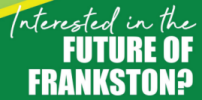
You are invited to this informative seminar hosted by Proudly Frankston, which is supported by various community groups who are active in planning and environmental issues – most notably the recent campaign to ‘Stop the Great Wall of Frankston’.
 Basically signals Victorian State Gov attempts to remove Local Governments by stealth: Taking over Council powers without consulting the electorate. Planning is the tool. Council writing to all other Vic Councils encouraging them to stand up to State Gov similarly.
Basically signals Victorian State Gov attempts to remove Local Governments by stealth: Taking over Council powers without consulting the electorate. Planning is the tool. Council writing to all other Vic Councils encouraging them to stand up to State Gov similarly.
 We predicted this would happen when the Vic government put developers in charge of what happens to the many golfcourses in Melbourne and regional Victoria. The seizure of these green public and private lands is now being normalised on public media.
We predicted this would happen when the Vic government put developers in charge of what happens to the many golfcourses in Melbourne and regional Victoria. The seizure of these green public and private lands is now being normalised on public media.
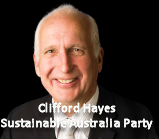
 The following is an excerpt from the Guardian, 14/03/2022, pertaining to Premier Daniel Andrews. Andrews also suggested the “great Australian dream” of owning a home was less important to younger generations, especially given the increasing cost of property – the median price of a home in Melbourne is now $1.1m.
The following is an excerpt from the Guardian, 14/03/2022, pertaining to Premier Daniel Andrews. Andrews also suggested the “great Australian dream” of owning a home was less important to younger generations, especially given the increasing cost of property – the median price of a home in Melbourne is now $1.1m.
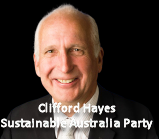 It is extremely frustrating and disappointing that the Government has used its numbers on the Committee to suppress this crucial inquiry into Victoria’s planning system and conveniently palm off embarrassing hearings until after the state election. It is obvious that this Government doesn’t want any verbal evidence, which would be heard by the press, presented to the inquiry in an election year because the evidence given will be a dire indictment on their leadership.
It is extremely frustrating and disappointing that the Government has used its numbers on the Committee to suppress this crucial inquiry into Victoria’s planning system and conveniently palm off embarrassing hearings until after the state election. It is obvious that this Government doesn’t want any verbal evidence, which would be heard by the press, presented to the inquiry in an election year because the evidence given will be a dire indictment on their leadership.
 Report headlines: Heritage Protection Forum planned; Federal Election; The Committee that ate Melbourne (The Melbourne Committee); Wattle Park Heritage Submissions sought; Curtin Hotel; Kilmore Land Deal; Crowag Green Notices; South East Water Reservoir, Mt Eliza; Heritage Victoria Permit Application for 2022 Melbourne International Flower and Garden Show; Ivanhoe Developer goes direct to Planning Minister; Queen Victoria Market; Big End of Town Complaints Department; High-rise A
Report headlines: Heritage Protection Forum planned; Federal Election; The Committee that ate Melbourne (The Melbourne Committee); Wattle Park Heritage Submissions sought; Curtin Hotel; Kilmore Land Deal; Crowag Green Notices; South East Water Reservoir, Mt Eliza; Heritage Victoria Permit Application for 2022 Melbourne International Flower and Garden Show; Ivanhoe Developer goes direct to Planning Minister; Queen Victoria Market; Big End of Town Complaints Department; High-rise A
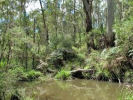 People concerned about Harkaway, in the Green Wedge, near Berwick are asking for your help to stop development ruining this lovely area. Why don’t you write to the Minister too and plead with him to say "NO." Submissions urgently needed before 5pm on 6 November. Subject: Proposed Rosemaur development for King Road Harkaway, Email to: [email protected] Details inside article.
People concerned about Harkaway, in the Green Wedge, near Berwick are asking for your help to stop development ruining this lovely area. Why don’t you write to the Minister too and plead with him to say "NO." Submissions urgently needed before 5pm on 6 November. Subject: Proposed Rosemaur development for King Road Harkaway, Email to: [email protected] Details inside article.
To all who care about preserving special places like Harkaway and their green wedge surrounds: 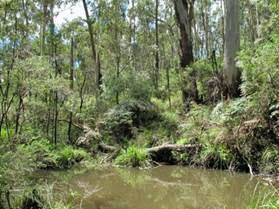
Harkaway is a hidden gem tucked away in the rolling foothills to the Dandenong Ranges just north of Berwick in the City of Casey. Until now, State Governments of both “colours” have agreed it should be sacrosanct - a “no go” zone for urban use development.
Wealthy Melbourne businessman Lindsay Hogg wants Planning Minister Richard Wynne to rezone his property in the middle of Harkaway’s precious Green Wedge land to enable an otherwise prohibited development including a restaurant, function centre and art gallery.
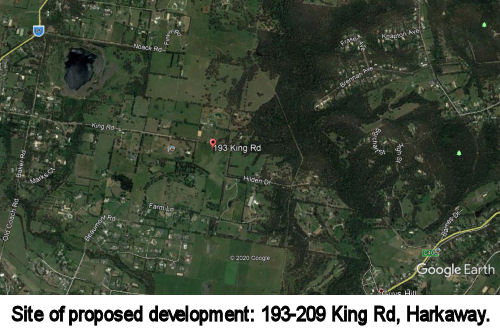
We are not against the concept, but looked at from every angle, this is the wrong location. It would bring large volumes of regular traffic into a dead end, high fire risk area, right through the tiny hamlet.
The local community will be subjected to this onslaught seven days a week, from 7am through to 1am Friday/Saturday, and until 11pm for the other five days, including Sunday.
Lunch patrons who have "wined and dined" would be passing the primary school where two cars can’t get by each other at pick up time, and there is no scope for widening. Many children walk or ride bikes to and from school or to the shop, park, tennis courts and playground, especially at weekends.
The change that would result from such a rezoning would be enormous and irreversible. The bushland and rural character of King Road would be transformed into an urbanised streetscape, with significant potential for environmental damage to Walsdorf Creek and increased traffic accidents.
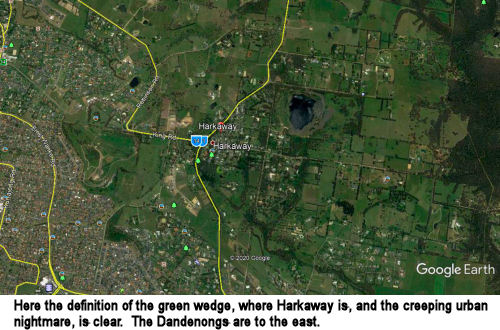
The local community is united against this development, but its voice is drowned out by the media campaign of Mr Hogg’s PR team which is presenting the application as a “fait accompli”.
The Planning Minister is seeking feedback on the proposal.
Please refer to the attached information sheet to help you provide it - loud and clear.
Save the Casey Foothills Association is joining forces with the Friends of Harkaway Association and the Harkaway Residents Group to try and prevent what would be a grotesque anomaly in this location.
There are far better alternative site options that would result in an improved outcome for the venture.
Please make a submission before 6 November and help prevent this potential catastrophe.
Or if you miss this deadline, please email it direct to the Minister.
Political pressure is the only way to protect our increasingly threatened special places from assault by powerful monied forces with their own agendas.
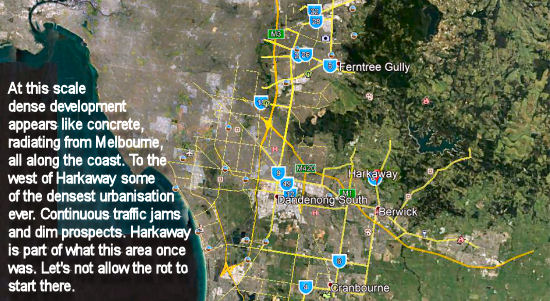
HARKAWAY & ITS GREEN WEDGE ARE UNDER SERIOUS IMMINENT THREAT
From what?
A SITE SPECIFIC AMENDMENT TO THE CASEY PLANNING SCHEME BY THE PLANNING MINISTER TO REZONE ONE PROPERTY IN THE MIDDLE OF HARKAWAY’S PRECIOUS GREEN WEDGE LAND.
For what purpose?
TO ENABLE AN OTHERWISE PROHIBITED LARGE SCALE URBAN DEVELOPMENT IN KING ROAD – NAMELY AN ART GALLERY, FUNCTION CENTRE, RESTAURANT AND TWO DWELLINGS.
What can I do?
MAKE A SUBMISSION BEFORE THE CLOSING DATE (See below for details)
What is the time frame?
SUBMISSIONS NOW ACCEPTED UNTIL 5:00 PM, FRIDAY 6 NOVEMBER 2020.
The Government had given the neighbours only 4 weeks’ notice & has not advised the village or other outlying residents at all. An extension of 3 months was sought. We got an extra 2 weeks.
How can I get more information?
Google “Rosemaur Gallery”. Select “Planning”, then “Documents” tab, OR type into your Search bar https://www.planning.vic.gov.au/policy-and-strategy/rosemaur-gallery#documents, or just click on the link below:
https://www.planning.vic.gov.au/policy-and-strategy/rosemaur-gallery#documents
Who to contact if I have a question?
State planning department: Hayley Becker – Manager Planning Services (South) Ph: 0423 491 851
Local community rep: Philip Battye Mob: 0407 012 006 Email: [email protected]
Green Wedges rep: Rosalie Counsell Mob: 0429 955 421 Email: [email protected]
What are the main issues? (See “Further Considerations” below for expanded list)
Planned large volumes of related traffic will be funnelled through the village past its primary school.
Widening and sealing King Road would:
o Destroy the character and identity of Harkaway as a country hamlet in a semi-rural bushland setting;
o Risk damage to the environmentally sensitive Waldorf Creek.
The site is in an increasingly high fire risk area at the far extremity of a dead end road.
The only escape route would entail annexing and sealing the equestrian trail, thus turning both King Road Harkaway and Farm Lane Berwick into through roads.
The proposal contradicts the very purpose of the existence of the green wedges and makes a mockery of the Planning Minister’s promise to further protect them.
What next? How to make a submission
Email your submission to: [email protected]
(This can be addressed to Mr Stuart Menzies, Director - State Planning Services and Cc’d to the Planning Minister: [email protected])
Remember – one sentence is better than nothing. Just say what you want to say in your own words, and you’ll be able to expand on or speak to this for the Panel Hearing, currently scheduled for next January 2021, should you wish to do so.
For over 20 years, our local residents have fought and won numerous battles to protect Harkaway’s special environmental and amenity values. On each occasion, State Government has supported the contention that these values must be preserved at all costs and Harkaway deemed sacrosanct.
Never before has our community been disenfranchised by Government in this way.
This application constitutes complete disregard for local community and for democratic process.
o People who live in and/or regularly visit the village of Harkaway would be as adversely affected as anyone else but were not notified.
o The short time frame and failure to consult affected parties raises the question of undue influence, or at best, democracy being compromised in the interests of misguided economic expediency.
Harkaway Road itself is fairly narrow and winding. It’s intersection with King Road is dangerous, despite the very small, inadequate roundabout. (No room for bigger one.)
The in-principle acceptance of the application is claimed to be partly based on the supposed value of the art collection. But it appears there has been no proper assessment of its real value. Regardless, this should not drive a planning decision.
The whole district is a Designated Bushfire Prone Area, and an estimated 40% of site is subject to the even more restrictive Bushfire Management Overlay.
There are no reticulated services in the area except electricity.
Harkaway’s 175 year old history, it’s unspoiled non-urban character, its wonderful landscapes and its high-value biodiversity should qualify the whole area as having State significance. Any suggestion that an inappropriately located art gallery and function centre could trump this is a nonsense.
The direct intervention by the Planning Minister Richard Wynne:
Flouts proper planning protocols by unjustifiably bypassing local council as the primary decision-maker on changes to the Planning Scheme.
Contradicts the very purpose of the existence of the green wedge zones.
Sets a dangerous precedent for future similar damaging applications.
Pre-empts and undermines a current Government review that aims to further strengthen protections in the Green Wedge zones.
Provides a massive concession to the proponent but inflicts enormous detriment on the local community. (Note: The applicant has registered as a charity, so will presumably be exempt from certain rates and taxes.)
Flies in the face of his stated intention not to intervene in local planning decisions.
If Casey Council and the Victorian Government preside over the wanton squandering of this unique, widely treasured asset that is Harkaway – “the jewel in Casey’s crown” – for the sake of an inappropriately located, wildly experimental, fragmenting development on the basis of a nebulous promise by a vested interest landowner living elsewhere, it will go down in Casey’s history as an outrage second only to the findings of the IBAC enquiry.
Harkaway needs your help. We can’t fight this David & Goliath battle alone.
 The draft Yarra Strategic Plan claims to deliver the first Victorian integrated river corridor strategy and to identify immediate actions for the river corridor, enabling long-term collaborative management between agencies and Traditional Owners. It is intended to guide local planning. We publish here a critical submission to this draft plan. Summary of submission by candobetter editor: Climate Change and human failure to interact safely with the natural world. Plan fails to adequately factor in transport interaction with Yarra. Lack of proper transport interconnectivity. Higher density depends on high quality public transport. Private car still dominates. Forecast population growth and new constructions will inevitably cause major environmental damage. North-East Link Freeway will comport massive land-fill problems, hardly referred to in Draft Plan. Likely potential for destabilisation of groundwater in the Yarra Valley in the Bulleen and Rosanna area as a consequence of the North-East Link Freeway project. Substantial areas of public open space is threatened by the project, together with about 25,000 mature canopy trees. Adverse human health effects of the project would include increased air pollution and heightened road noise. Lack of cycling provision on roads in cities of Boroondara, Banyule, Manningham and Maroondah and the Shires of Nillumbik and Yarra Ranges. Proposal in Plan to increase lanes capacity on the Eastern Freeway to cater for the North East Link project by over 40%, from 802,000 square metres to 1,127,000 square metres. Adverse environmental effects would include increased run-off of polluted stormwater into the Yarra River and elevated ambient temperatures as a consequence of the large increase in concrete and asphalt surfaces. Report of the Commissioner of Sustainability, State of the Yarra and its Parklands (2018), concluded that the status of the Yarra river was poor for 18 of its 25 environmental indicators. This can only deteriorate if planned stressors go ahead.
The draft Yarra Strategic Plan claims to deliver the first Victorian integrated river corridor strategy and to identify immediate actions for the river corridor, enabling long-term collaborative management between agencies and Traditional Owners. It is intended to guide local planning. We publish here a critical submission to this draft plan. Summary of submission by candobetter editor: Climate Change and human failure to interact safely with the natural world. Plan fails to adequately factor in transport interaction with Yarra. Lack of proper transport interconnectivity. Higher density depends on high quality public transport. Private car still dominates. Forecast population growth and new constructions will inevitably cause major environmental damage. North-East Link Freeway will comport massive land-fill problems, hardly referred to in Draft Plan. Likely potential for destabilisation of groundwater in the Yarra Valley in the Bulleen and Rosanna area as a consequence of the North-East Link Freeway project. Substantial areas of public open space is threatened by the project, together with about 25,000 mature canopy trees. Adverse human health effects of the project would include increased air pollution and heightened road noise. Lack of cycling provision on roads in cities of Boroondara, Banyule, Manningham and Maroondah and the Shires of Nillumbik and Yarra Ranges. Proposal in Plan to increase lanes capacity on the Eastern Freeway to cater for the North East Link project by over 40%, from 802,000 square metres to 1,127,000 square metres. Adverse environmental effects would include increased run-off of polluted stormwater into the Yarra River and elevated ambient temperatures as a consequence of the large increase in concrete and asphalt surfaces. Report of the Commissioner of Sustainability, State of the Yarra and its Parklands (2018), concluded that the status of the Yarra river was poor for 18 of its 25 environmental indicators. This can only deteriorate if planned stressors go ahead.
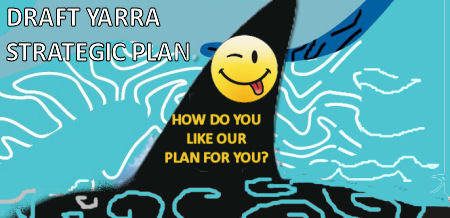

Introduction
The draft Yarra Strategic Plan rightly identifies climate change as a threat to the Yarra River. In this regard, climate change is neither more or less than a register of the failure of the human species to interact properly with the natural world. COVID - 19 also falls into that category.
Transport and the Yarra
The draft Plan gives too little attention to the relationship between transport and the health of the Yarra. This is a major flaw. The functionality of large cities is decided more than anything else by the dominant modes of mobility deployed in them.
The draft Plan declares (p. 16) that the Department of Transport "plans, builds and operates an integrated, sustainable and safe transport system across Victoria. It does not, actually, as little effort is made to integrate the various modes. Within the public transport sphere in particular, insufficient effort is made to ensure the connectivity of the network.
Even more importantly, the concept of integrated transport and land use planning has pretty much been abandoned by the Victorian government, and has done so since Melbourne 2030, with the concept of the poly-centric city at its core, was all but forgotten.
The idea (p. 12) that higher density residential development should be the sole province of inner areas is flawed. There is significant demand for higher density residential development in locations well removed from inner Melbourne. The central problem is that the government has abandoned the key enabler of this, which is high quality public transport across the whole of Melbourne.
The reality is that the modal mix for personal travel in the City of Melbourne is little different from what it was 50 years ago. The private motor car dominates. And it is very space-inefficient.
The draft Plan anticipates that Melbourne's population will grow to nearly 8 million by the year 2051, and with an extra 140,000 dwellings to be built in the Yarra River corridor by 2041.
There are no grounds, within current policy settings, that these "milestones" would be reached without damaging the environment very seriously. The central issue is that the Victorian government does not have a transport plan for Melbourne.
North East Link
The Victorian government's North East Link freeway project is hardly referred to in the draft Plan. It should be. It was developed in the absence of any consideration by the government of other forms of transport, and especially public transport, which would have a relatively benign effect on the Yarra River corridor.
It is understood that the extensive tunnelling proposed for the project would require the excavation of about 1.5 cubic metres of rock and soil, which would go to landfill (see Timna Jacks and Benjamin Preiss, "Warning over toxic soil from 'big dig,'" Sunday Age, December 1, 2019). It is not known whether any of the material is toxic and there appears to be insufficient landfill capacity to take it.
There appears to be potential for destabilisation of groundwater in the Yarra Valley in the Bulleen and Rosanna area as a consequence of the project.
Substantial areas of public open space is threatened by the project, together with about 25,000 mature canopy trees.
Adverse human health effects of the project would include increased air pollution and heightened road noise.
Paved surface area
One of the dysfunctional elements of the dominance of the motor car is the increase in paved road surface that is required to cater for ever-growing motor vehicle numbers. For instance, it is proposed to increase lanes capacity on the Eastern Freeway to cater for the North East Link project by over 40%, from 802,000 square metres to 1,127,000 square metres. The adverse environmental effects would include increased run-off of polluted stormwater into the Yarra River and elevated ambient temperatures as a consequence of the large increase in concrete and asphalt surfaces.
Local government and transport
It is not only at state government level that we have major policy failure in transport. For instance, if one is to consider the land area of the City of Boroondara, it is comprised of about 6,022 hectares, of which 1279 hectares, over 20%, is comprised of road reservations. About 80% of the land devoted to road reservations is controlled by the City of Boroondara, with the balance controlled by VicRoads. The reservations controlled by Boroondara contain about 560 kilometres of local roads.
Significantly, very few of these roads have been developed to provide for safe cycling traffic. They are designed, with few exceptions, exclusively for motor car traffic. Apart from the City of Yarra, the other councils with a direct interest in this project (the cities of Banyule, Manningham and Maroondah and the Shires of Nillumbik and Yarra Ranges), also appear relatively uninterested in increasing the mode share of space-efficient, and therefore environmentally friendly forms of transport.
Conclusions
The Status Assessment contained in the report of the Commissioner of Sustainability, State of the Yarra and its Parklands (2018), concluded that the status of the river was poor for 18 of its 25 environmental indicators.
These measures will continue to deteriorate unless substantial reforms are made to transport capacity in Melbourne, and especially in the Yarra River corridor, to preference space-efficient and less carbon polluting transport modes.
Ian Hundley
29 March 2020
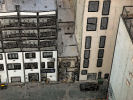
 In the Beginning …
In the Beginning …
Earth’s atmosphere was unbreathable to humans. But that was okay, since there were no humans. Photosynthesising cyanobacteria used sunlight to convert carbon dioxide and water into food, incidentally producing oxygen. The many microbially-mediated rocks (stromatolites) the bacteria left behind from their halcyon days indicate a cyanobacteria population explosion so vast that it seems likely that simple metabolism accidentally transformed the atmosphere to the one we love and overuse today. This ‘oxygen holocaust’ probably also brought about the fossil status of our inadvertent benefactors around 2.5 billion years ago.
If tiny animals could achieve this, imagine what a lot of humans can do.

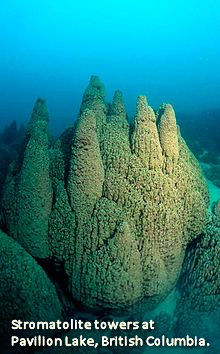
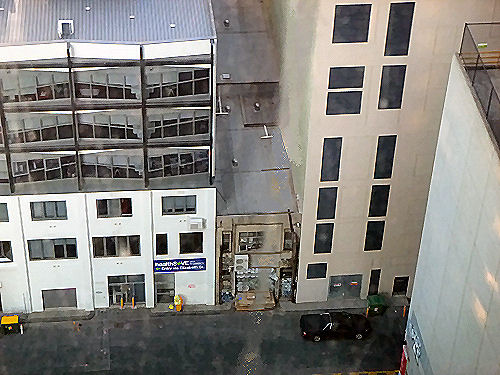
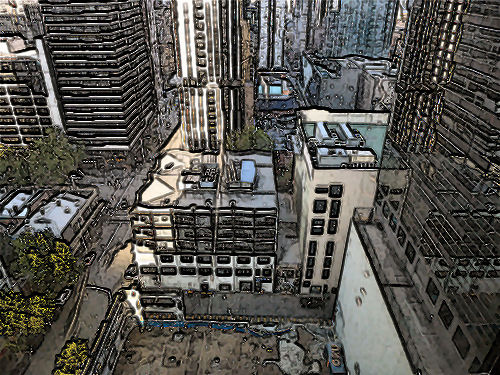




Incredibly the evolutionary serendipity from our point of view did not end there because cyanobacteria fats eventually formed the petroleum hydrocarbons which drive the sophisticated combustion engines of trains and boats and planes today.[1]
The human population explosion followed and our activities, combined with energy created by burning the cyanobacteria fats, created accretionary structures on a scale never seen before. We are covering the earth in dead matter, faster than any of nature's services can deal with, and it is said that we are changing the atmosphere into an oven.
Looks like we are going the way of the cyanobacteria.
At the beginning of this month, at the height of the bushfires in Sydney and Gippsland, I had the weird experience of spending two nights in a short-stay apartment building in A'Beckett Street, Melbourne. It was peopled by uncommunicative strangers and completely jerry-built. The handle fell off the door to the 18th floor balcony (lucky I was not outside at the time), the bathroom door kept sliding open unless you put a towel under it, the wifi was unreliable and weak, and the television did not work at all. A'Beckett Street is full of, and surrounded by, such multi-storey short-stay apartments, their mirror-glass neighbours reflecting them endlessly in fractals. I took photos of these broken glass splinters crowded together, group-punching the smokey sky, like angular stomatolites of unprecedented height.
Opposite the short-stay was a classic situation of an abandoned two-storey shop frogmarched between two taller buildings. And this group was dwarfed by a gathering army of giant towers. On every nearby street, more were being built, untidy packaging spilling onto pavements. You could not walk straight down a street because of the debris and the barriers. You could not talk because of the construction noise.
Dead matter. No green spaces, no animals or natural processes - apart from geological ones - to wear these materials down. When they crumble they won't dissolve easily back into the environment; they will be like their own tombstones; a jagged cemetery of human-generated stromatolites.
There was still a little bit of green at Victoria Markets - also doomed to be covered in skyscrapers, if Melbourne planning continues its rapine way with our city.
A friend expressed shock at the density of high-rises in Melbourne, wondering why the laws allowed them to crowd out the sunlight.
But homo economicus is driven blindly to convert land into money, as the cyanobacteria were blindly driven to convert carbon dioxide to oxygen. The cyanobacteria left stromatolites and homo economicus leaves giant agglomerations, but it's still just another way of getting food, however indirect.
These paragraphs about cyanobacteria come from the introduction to Sheila Newman, (Ed.) The Final Energy Crisis, 2nd Ed., Pluto Press, UK, 2008.



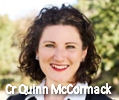

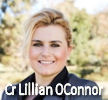
At Frankston Council meeting on 29 January 2020, Cr Hampton sought by means of a Notice of Motion (NoM) to overturn council's decision of 14 Oct 2019 to adopt a revised Draft Green Wedge Management Plan. The NoM sought to investigate an excision of part of Frankston's Green Wedge for an expansion of the Carrum Downs Industrial Precinct. The NoM was voted down by Crs McCormack, Aitken, O'Connor, Toms and Mayor Mayer, (five of the nine). Cr Bolam abstained. [Ed. Note: A correction to this article on who voted it down was made on 30 January 2020.]
Frankston commentator Michele writes: "We could not have done this without wonderful Planning Backlash, WeCanDoBetter, Defenders of South East Green Wedge , Facebook posters, advisers and supporters, and speakers from Frankston Beach Association, South East Green Wedge, Frankston Environmental Friends Network and the community. Unknown numbers of people emailed councillors. Those opposing the NOM (Notice of Motion) with presentations had loud encouragement from the gallery."
Cr Hampton reportedly stated incorrectly that his NOM was increasing the minimum lot size in Rural Conservation Zone 1 and was not proposing a reduction in lot sizes elsewhere. He reportedly later apologised privately for getting it wrong, blaming Officer error.
The CEO assured councilors that tomorrow, without delay, the Management Plan would go to the Planning Minister for an amendment to the Planning Scheme to have the GWMP introduced as a reference document.
Michele concludes: "You are all so wonderful and inspiring in your fervor to protect our environmental values and not let vested interests always have the upper hand. The biggest thank you to all of you. Of course, the winner is the Green Wedge, its special values and features. Let's hope they endure and improve.
The late Barry Ross of S.E. Green Wedges must be smiling!"

 "People have a right to a say in the character of their street, and their neighbourhood. The principle of subsidiarity, of devolving power to the lowest practical level, is important. It is indeed good for people’s mental health if they have a say, and bad for their mental health if they feel powerless. My Bill does two key things – it requires VCAT to follow properly made Council decisions, and it gives Councils, rather than Ministers, the last word on height controls. Hayes says, "At present VCAT is out of control. Its proper role is to ensure that Councils don’t act in an arbitrary or capricious fashion [...]. But VCAT behaves as a Planning Authority in its own right, telling Councils that although the Council wants a height limit of, say, 4 storeys, they think that 6 storeys would be better! Councils should be able to put in place mandatory height controls at a height acceptable to the community. The high rise buildings being approved by Planning Ministers are not in the best interests of residents, overshadowing them and turning Melbourne into a soulless concrete jungle. Communities should have a say in relation to height limits." (MP Clifford Hayes in speech to Protectors of Public Lands Vic. reproduced here.) (Photos by Jill Quirk)
"People have a right to a say in the character of their street, and their neighbourhood. The principle of subsidiarity, of devolving power to the lowest practical level, is important. It is indeed good for people’s mental health if they have a say, and bad for their mental health if they feel powerless. My Bill does two key things – it requires VCAT to follow properly made Council decisions, and it gives Councils, rather than Ministers, the last word on height controls. Hayes says, "At present VCAT is out of control. Its proper role is to ensure that Councils don’t act in an arbitrary or capricious fashion [...]. But VCAT behaves as a Planning Authority in its own right, telling Councils that although the Council wants a height limit of, say, 4 storeys, they think that 6 storeys would be better! Councils should be able to put in place mandatory height controls at a height acceptable to the community. The high rise buildings being approved by Planning Ministers are not in the best interests of residents, overshadowing them and turning Melbourne into a soulless concrete jungle. Communities should have a say in relation to height limits." (MP Clifford Hayes in speech to Protectors of Public Lands Vic. reproduced here.) (Photos by Jill Quirk)

Thank you for the invitation to speak with you this afternoon and thank you also for the opportunity to represent you in the Victorian Parliament. I am aware that it is a great honour.
I want to congratulate the Protectors of Public Lands on what you do. Protecting the public domain is very selfless, unselfish work. It is also often thankless and difficult work. They’re not making any more land, but we are making many more people, and the resulting clash over the uses to which land should be put are becoming more acute with every passing year.
And of course the increasing price of land in our suburbs has made open space immensely valuable in dollar terms, leading to landowners including Commonwealth and State Governments looking to sell it off and make a real estate killing. Yet the population growth that drives the escalating land price also makes open space more valuable than ever AS open space – keeping our city and suburbs cool, giving us public places to walk, meet or rest, helping our mental health.
Just a fortnight ago the journalist Noel Towell reported in The Age that the State Labor Government is poised to massively ramp up its sales of publicly owned Crown land around Victoria, with more than 2600 hectares set to go under the hammer.
About 150 sites in Melbourne and country Victoria are listed as on the market for future land sales in a sell off that dwarfs the 533 hectares sold in the past 10 years.
Last week I asked a Question without Notice in the Legislative Council about this Report as follows – “Given the dramatic ongoing decline in open space per capita in Melbourne as a result of population growth of well over 100,000 per annum and the alarming decline in Melbourne’s vegetation cover, will the government investigate offering these parcels to local Councils for a nominal amount subject to an enforceable condition that they are turned into, maintained and retained as public open space?”
I am well aware that people in this room have spent a lot of time trying to stop the State Government selling off public land, often involving Government agencies offering the land to Councils at inflated prices that amount to duress, and a scam, where the public is being expected to pay for land that we already own. The Minister’s reply was polite, but not very encouraging. That is why your work is so important, keeping Governments and their Departments and agencies honest.
I see the clash over using land for public open space, or for other uses – which are often in themselves good and socially beneficial, such as facilities for women’s sport – played out time and time again in my Electorate. I have the good fortune to represent a significant area of beautiful Port Phillip Bay beachfront, and that is an area of great conflict. We have proposals to add a large restaurant to the Brighton Life Saving Club as part of its redevelopment. We have a proposal from a café lessee to take over and develop an area where public toilets are located at North Point. We have proposals to extend the opening hours for a café/restaurant at Ricketts Point.
Each of these proposals can sound reasonable, and many of us like to eat or drink by the beach or foreshore, but their sum total is to kill off the connection with nature that is the very thing that makes the beach attractive in the first place – to kill the goose that lays the golden egg.
Unfortunately – and I think your late Secretary and driving force, Julianne Bell, grasped this with great clarity – there is hardly a blade of grass or grain of sand that isn’t being eyed off by someone who wants to make a dollar out of it or appropriate it for their own benefit. It’s not just in my part of the world – I know of the battle, for example, in historic Footscray Park, where the well connected Melbourne Victory soccer club is seeking to establish a large stadium in parkland close to the Maribrynong River. And of the Warrnambool Racing Club’s appropriation of the beaches between Warrnambool and Port Fairy to train racehorses, to the detriment of other beach users, particularly the endangered Hooded Plover.
Often when land is appropriated and vegetation bulldozed elaborate promises are made about offsets elsewhere. In my experience these undertakings are seldom honoured. For example 10 years ago when a previous State Labor Government expanded Melbourne’s Urban Growth Boundary to allow for massive development in Melbourne’s west it said developers would have to pay a habitat protection levy which would enable the purchase of areas of grassland which would offset the development. 10 years later it has emerged that at the present rate of progress it will take the Victorian Government 100 years to purchase the amount of grassland it promised to protect at the time!
And just last week it introduced a Bill to amend the levy. For starters I am disappointed to read that the Habitat Compensation fee system is being renamed the Environment Mitigation Levy. It is the loss of habitat that is the core issue here, and we should never lose sight of it. I am also troubled to learn that property developers are talking about how well the Government has consulted with them over this Bill, when I don’t think it has been consulting with environment groups at all!
In my first speech to Parliament in February I set out my vision for Melbourne – to make it a great place to live, not merely a great place in population size to rival such places as Shanghai, New York, London, or Sao Paolo. Such greatness would be mere obesity, with all the disadvantages of such.
Not a city or a state where people are crammed into dogbox apartments, living on crowded and congested streets in an environmentally unfriendly concrete heat island, but a spacious city with open skies, open and tree-filled streets, with gardens.
Unfortunately this is not the direction in which Melbourne is headed. Since Australia’s migration programme was turbocharged and effectively trebled some 15 years ago, Melbourne has been growing at a rate of over 100,000 people each year, and is now growing at around 130,000 people each year. This has had numerous adverse impacts on our quality of life – traffic congestion, housing unaffordability, loss of vegetation, wildlife and open space. One of the consequences of Melbourne’s rapid population growth has been an attack on local democracy. Residents have lost their right to a say in the character of their street, their neighbourhood and their community.
Consistent with my election commitments I moved a Private Members Motion in May, aimed at restoring local democracy in planning issues and curbing the power of the Victorian Civil & Administrative Tribunal (VCAT). The Motion called on the Government to give more power to local councils to defend their communities from inappropriate developments.
In particular it called on the Government to amend the Planning & Environment Act so that VCAT was required to give effect to local planning policies, rather than just taking planning schemes into account. It also called on the Minister for Planning to implement mandatory height controls, rather than discretionary height controls, where Councils sought them.
I was delighted that this motion was passed in the Legislative Council with the support of the Liberal opposition and my crossbench colleagues. It is very unusual for a Motion to pass in either House without the Government’s support.
I believe there is a real mood for change in the community to fix a planning scheme which is biased against local residents and skewed in favour of property developers. I am now preparing amendments to the Planning & Environment Act which would give legal effect to the sentiments in my Private Member’s Motion. I believe these amendments would help restore the balance and give local residents a genuine say in planning decisions. I am encouraging residents and community groups to support my campaign for greater local democracy in the Planning & Environment Act.
People have a right to a say in the character of their street, and their neighbourhood. The principle of subsidiarity, of devolving power to the lowest practical level, is important. It is indeed good for people’s mental health if they have a say, and bad for their mental health if they feel powerless.
• The Bill does two key things – it requires VCAT to follow properly made Council decisions, and it gives Councils, rather than Ministers, the last word on height controls.
• At present VCAT is out of control. Its proper role is to ensure that Councils don’t act in an arbitrary or capricious fashion, for example by allowing one person to build four units on their property, and refusing to allow a next door neighbour with the same size property to do the same. But VCAT behaves as a Planning Authority in its own right, telling Councils that although the Council wants a height limit of, say, 4 storeys, they think that 6 storeys would be better!
Councils should be able to put in place mandatory height controls at a height acceptable to the community. The high rise buildings being approved by Planning Ministers are not in the best interests of residents, overshadowing them and turning Melbourne into a soulless concrete jungle. Communities should have a say in relation to height limits.
That said, I am absolutely aware that giving Councils more power is not a silver bullet, and that Councils can and do make poor decisions.
• It is not true that people who oppose high rise are NIMBYs, or that they favour urban sprawl. They don’t want the high rise forced in ANYONE’s backyard. What the State Government needs to examine is the premise that Melbourne has to keep increasing by 130,000 people each year. That’s the issue that people are never given a say about.
• Melbourne’s rapid population growth, combined with enforced urban consolidation, has resulted in a paving over of open space and a loss of vegetation and wildlife, when in times of climate change we need our vegetation, front yards and back yards. Urban consolidation has turned suburbs into heat islands. Population growth has driven traffic congestion and road rage. It has driven housing unaffordability and homelessness, and population growth has driven the construction of high rise buildings which are full of defects and even unsafe.
• Property developers have done well out of this government sponsored building boom of the past 15 years, but ordinary residents have not. Their quality of life has declined, and it will continue to decline unless legislation like this puts power back in the hands of ordinary people.
A study in December 2017 found that high-rise living had adverse impacts on mental health. It found that sharing semi-public spaces with strangers can make residents more suspicious and fearful of crime. Many feel an absence of community, despite living alongside tens or even hundreds of other people.
There is a fear of isolation. During ongoing research into social isolation among older people in the English city of Leeds, residents of high-rise buildings reported feeling lonely and isolated – some were afraid to even open their front doors.
Many advocates of high density living claim that it is better for the environment and climate change than suburban sprawl. Studies have shown this to be not the case. One 3 year US study in 2017 found that living in a high-rise tower in Chicago was much less environmentally sustainable than moving to a house in the suburbs. Apartment dwellers consume more energy, spend more of their time travelling, and use their cars more.
In terms of embodied energy in construction high-rise fared even worse. The project found that high-rise buildings required 49% more embodied energy to construct per square metre, and a stunning 72% more on a per person basis.
As has been noted before, the most energy efficient building is the one that already exists. Unfortunately State Governments have paid way too little attention to this and have made it far too easy to demolish existing houses, even those of heritage significance.
The idea that high density apartments, which require more lighting and air conditioning, are more sustainable than detached houses, which can have solar panels, rainwater tanks, and front yards and back yards with trees, shade and open space, is contradicted by the evidence.
So what needs to change? In my view, it’s not complicated. Two words - local democracy. Give the local residents the power in relation to planning. The Planning and Environment Act 1987 was supposed to establish a framework for planning the use, development and protection of land in Victoria in the present and long-term interests of all Victorians. It is my contention that it has been changed by successive governments so that it does not achieve those objectives.
The bill I will present seeks to do this in two ways. First by directing planning authorities and VCAT to consider and give effect to local planning policies which have been approved by the Government. Secondly by allowing Municipal Councils to set real height limits, including mandatory controls, which cannot be undermined by either State Government or VCAT.
Under my bill the Minister for Planning will be required to accept Council proposals for mandatory height limits, rather than arbitrarily raise the limits or make them discretionary and therefore worthless, as he does at present.
The bill will also make VCAT consider Strategic Planning Policies developed by Councils. What’s more, it will instruct VCAT to give effect to such local planning policies as expressed in the Local Planning Policy Framework.
I encourage your members to contact your local Members of Parliament by phone, email, letter, or in person, to encourage them to vote for the Bill. And on Sunday 10 November, in the week before my Bill gets debated in the Legislative Council, there will be a Rally at the Elsternwick Plaza, next to Elsternwick Station, at 2pm. I encourage you to attend, and bring others!
My bill is a modest proposal that is intended to start the process of giving back planning controls to local communities through their elected councils.
I hope it will not only be a shot in the arm for local democracy and genuine community say, I hope it will act as a brake on rampant habitat destruction. The key driver of habitat destruction is population growth. Sadly environment groups seem to lack the courage to stand up and say this. One honourable exception I came across recently was Jeff Davis, Assistant Director of the Washington Department of Fish and Wildlife Habitat at a June 2019 meeting of the Southern Resident Killer Whale Task Force, who said “Population Growth is the Top Challenge for Conserving Habitat”.
He was followed by a Task Force Member G.I. James, who works with the Lummi Nation’s Natural Resources Division, who was prepared to tell a few home truths about the threat to the orcas –
“We’re worried about the population that’s going to be here in the next 25 years and we can’t even address the problems that are being created by the people who are here right now. We think we can have it all. We can have the roads, we can have our cars, we can have our businesses and we can still have those natural resources that depend on the very same things all that destroys”.
Indeed. I thank the Protectors of Public Lands for everything you have done, and are doing, to protect the quality of life in Melbourne from overdevelopment. It is often hard, unrewarding work, but it is very important in maintaining our quality of life, and not allowing it to quietly slip away.
I hope you can join my fight for a better, not bigger, Australia, and I and my office are always ready to assist you in any way we can.
Clifford Hayes, MLC,
Sustainable Australia Party
Southern Metropolitan Region.
Direct: (03) 9530 8399 | 0458 750 700
Business Address: 206 Bay Street, Brighton

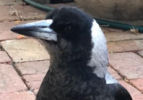 “This is where we have got to with government-engineered breakneck population growth that also puts property developers and associated professions in charge of planning. 110 golf-courses, which occupy green, treed spaces, in all kinds of areas in Melbourne and its suburbs and another 374 in Victorian regions, now carry hugely increased potential resale value if speculators can get them rezoned for more intensive use. Predictably, golf-course owners and probably management committees are now complaining that they aren’t making enough money. Some of their complaints will be well-founded, because state-imposed population pressure has caused demand for land, water and power, hence their costs, to rise rapidly. If nothing is done, either to reduce population growth, or exempt golf-courses from paying these charges, they will skyrocket.” (Sheila Newman, Population, environment and land-tenure systems sociologist.)
“This is where we have got to with government-engineered breakneck population growth that also puts property developers and associated professions in charge of planning. 110 golf-courses, which occupy green, treed spaces, in all kinds of areas in Melbourne and its suburbs and another 374 in Victorian regions, now carry hugely increased potential resale value if speculators can get them rezoned for more intensive use. Predictably, golf-course owners and probably management committees are now complaining that they aren’t making enough money. Some of their complaints will be well-founded, because state-imposed population pressure has caused demand for land, water and power, hence their costs, to rise rapidly. If nothing is done, either to reduce population growth, or exempt golf-courses from paying these charges, they will skyrocket.” (Sheila Newman, Population, environment and land-tenure systems sociologist.)
After a 2017 discussion paper that not many of us heard about, the Department of Environment, Land, Water and Planning, has again discreetly invited people to provide feedback to draft guidelines for their Golf Course Redevelopment Standing Advisory Committee, which is composed of property development industry professionals
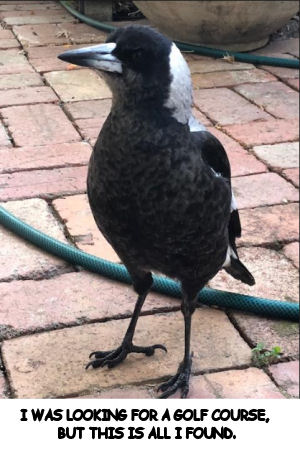
by Sheila Newman, Population, environment and land-tenure systems sociologist.[1]
This is where we have got to with government-engineered breakneck population growth that also puts property developers and associated professions in charge of planning. 110 golf-courses, which occupy green, treed spaces, in all kinds of areas in Melbourne and its suburbs and another 374 in Victorian regions, now carry hugely increased potential resale value if speculators can get them rezoned for more intensive use. Predictably, golf-course owners and probably management committees are now complaining that they aren’t making enough money. Some of their complaints will be well-founded, because state-imposed population pressure has caused demand for land, water and power, hence their costs, to rise rapidly. If nothing is done, either to reduce population growth, or exempt golf-courses from paying these charges, they will skyrocket.
The proposal is outrageous, of course. It is outrageous in scale, in potential irreversibility, in lack of statistics, and in lack of adequate notification[2] of all Australians that something so huge is in train. If a government can provide wide, ongoing promotion of the dangers of bowel cancer, it could have reached more people on this.
It is also outrageous in the impossibility of most Victorians to find the time to contextualise, assess, and reply to the proposal, even if they knew about it.
It is notably shocking in its potential costs to environmental quality and diversity for all Australians.
It is especially outrageous in its potential strategic profit-grabbing by the property development and construction industry, which has positioned itself with government to generate focused benefits in demand from the massive population-growth engineering it has lobbied for so successfully and undemocratically. In the game of mates, the property developers and the state government (which has become dependent on stamp-duty[3] in lieu of a real economy) are organised to receive the focused benefits, but the public will pay – and not just in dollars - the diffuse costs of this massive expansion and intensification.[4]
This proposal, which flags a copious series of case-by-case fights over rezoning golf-courses for development, is a fine example of the kinds of diffuse and hard to identify costs that the public will bear if this goes ahead. The proposal would require Melbourne’s increasingly socially precarious population, already severely stressed by constant change, to endlessly monitor what is happening to golf courses along with all the other continuous development.
We should have the ability to reject out of hand such proposals all at once, in a job lot.
We should not be expected to devote our lives to fighting to keep what we have, against people who are supposed to be protecting it on our behalf.
Who, except developers, who are networked, resourced and organised at national, state and local level, could find out where all the golf-courses are and then attend, in person or by proxy, all the hearings and reviews, and engage in all the processes, that a Golf Course Redevelopment Standing Advisory Committee would apply to each of them? Who else could afford to do this? Who else controls the process?
On the technical side, these ‘planning guidelines’ lack adequate recognition or an overview of the huge natural benefits of relatively undeveloped land. Golf courses have important uses other than golf – as habitat for birds and other fauna, for climate stability, and for the green relief they provide from densely populated spaces. I personally prefer natural landscapes with native plants and animals to golf-courses, and I prefer landscape painting and bird-watching to golfing. Nonetheless, I can see that golf courses are much better for ecology and environment than buildings, roads, and other intensified land-uses. Melbourne, which was planned with large avenues and many green spaces, now lacks green spaces and is choked with traffic. Unfinancial golf-courses, if they cannot be made financial (see further on) should be returned to nature, to provide scarce habitat to our native animals and contact with nature for humans. These golf-courses often got by on the pretext that they would preserve open land and some habitat in the form of golf courses, as a trade-off for more development. “Since 2000 around over 10 new golf courses have been established as the centrepiece of high-end residential developments in Victoria.”[5] No surprise if they want to develop it now.
Given that the Victorian Government intends to keep inviting people to come and live and work in Victoria, anticipating doubling and redoubling of the population, if Victoria has more golf-courses per capita than other states, it will need them, for golf or for return to nature.
The situation is particularly dire for birds – they really need golf-courses. Australia is a land of birds; we have the most extraordinary range. Doesn’t anyone in planning know of our amazing evolutionary history? It is world famous! The majority of the world’s bird species started here, notably perching birds[6] and song-birds.[7] Humans who are able to hear and see birds deeply enjoy this experience, which seems to become more important as they get older. Bird-watching is an extremely popular activity in Australia. Birds Australia has multiple branches and a busy membership. Does the property development lobby/government really want to be responsible for wiping birds out in more and more places, and removing our age-old relation with them? Although birds are equipped to survive in many circumstances, able to move in search of water and food, massive population growth-fuelled development is transforming the sparse green fringes of this land into a hard-surface desert.
The situation for birds in the South East Region of Australia – Melbourne and Victoria – is increasingly difficult. Birds that require nesting hollows are devastated by the destruction of trees. ‘Common’ much-loved species like kookaburras, magpies and willy wagtails are now struggling, and shorebirds are in steep decline.[8] Golf-course land, because it is not intensively used and retains trees, is a vital resource for birds. There are golf-courses in just about every kind of habitat, including near sea-shores.
With regard to strengthening the viability and continuity of golf clubs, governments should reduce or remove the rates paid for land, water, and power, for golf courses (and any other undeveloped land). The government could pay golf-course owners for mitigating climate change and urban island heat effects through their green spaces. Developers should be levied for this purpose in order to compensate the damage that they do.
Development, with its land-clearing and massive use of materials and energy, as well as creating huge carbon emissions, creates clumps and blocks of aggregate dead material. This is hard for organisms to break down, and incapable of re-ordering and reproducing itself. Living things, however, are the only things that can actually reorder energy and materials, in the acts of ingestion, reproduction and cellular repair.[9] The exception here is ‘modern’ human life, because humans come with more and more dead stuff per capita, in the form of roads, buildings, cars, and other consumables. Hence, we need more golf courses, or to return them to nature, more natural spaces, trees, forests, and healthy water bodies to support the organisms and ecologies that can clean up our synthetic concretions.
In this regard, the current economic model which taxes land in order to induce profit-making activity on it, is now a liability. It needs to change in order to promote natural land. State Governments have to get over their addiction to stamp duty. Otherwise, all this land will disappear under tar and cement.
Redevelopment is a bad thing for golf-courses. We have too much development now, and too much human population growth. Any golf-courses that are going to be abandoned as such, should be returned to nature.
Government may need to buy this land from owners of golf-courses who do not want it, and this is a major reason why this land should be excepted from rezoning possibilities. Overpopulation has already drastically overpriced land in Melbourne, even if it is not zoned for development. This makes it difficult and often impossible for local governments to purchase it in order to preserve natural space for Australians. This is why golf-course land and other relatively natural land must not be alienated from its low-use zoning. It must be taken out of the insane speculation cycle, for the thermodynamic reasons stated above as well as the social ones. Speculative gains are not a citizen’s by right.
The ‘guidelines’ have also skewed the idea of open space with social, ecological, and environmental benefits to something always involving some infrastructure, such as ‘playgrounds’ and ‘sports grounds’. It is a form of regimentation as well as an unnecessary kind of capitalisation. As I have intimated, people can enjoy natural surroundings just by walking, and these places can provide habitat for our native animals. They already provide bio-links or wildlife corridors. Any further ‘development’ would reduce the size and viability of these bio-links, which should be increased and consolidated.
If we have to put hospitals on golf course land then we should realise that we have gone too far in our population and development paradigm. Unaffordable housing and homelessness have increased as Australia’s population has grown, especially from 2009 with massively increased its overseas immigration. Once again, unaffordable housing is a sign that we should interrupt our population and development juggernaut.
There are no ordinary people on it who do not have deep involvement in the commercial property development industry. One of them was the secretary of population growth-lobbying APop from about 1999 to 2015.[10] For this reason the Committee should not have the power to say whether or not a golf-course may be considered for development. A cross-section of ordinary people should be able to decide this on a case by case basis. Only after this, in the unlikely event that such a democratic cross-section felt that any golf-course could be let go for development, it might be passed on to the Committee for more technical assessment.
The documents for this golf course redevelopment proposal have rationalised the closure of golf-courses largely in monetary terms, especially noting that some were not making a profit. The proposal seems to have attempted no education of the public on the main reason why, which is that state- engineered population growth had raised the costs of land and water involved in running golf-courses, thus narrowing their profit margin, and making it tempting for them to cash their land in. It is also suggested that people are not playing golf as much as they used to. We are not told why this is, although the 2017 discussion paper suggested that ten new golf courses that established themselves as centrepieces of high-end residential developments in Melbourne, had added to an oversupply. The development industry runs VCAT planning; it authorised those developments. It should return that land to nature. Many other possible reasons present themselves – changing demographics, difficulty in travelling due to congestion, increased fees, subtle discouragement of golfing by owners wanting to speculate, overwork among the financial, and poverty among the unemployed. The point is, we should not allow the developers or the government to goad us into a situation where land-availability becomes so desperate that it must be constantly used and attract a high financial return.
As for redevelopment and the construction industry: The cladding crisis has highlighted the long-known fact that our construction and development industry is largely incompetent, unaccountable, and uninsurable.[11] With respect, it seems quite remarkable that the same industry thinks it should get golf course land or do any more building at all, let alone continue to be in charge of major decisions in Victorian planning.
This golf course redevelopment proposal is very important. It flags a major danger-point that we have reached, preparing to sacrifice something Australians have counted on – natural land. It shows what happens when a government engineers break-neck population growth and then puts property developers in charge of planning. All natural spaces are threatened. The fewer green spaces there are, the more their potential price for resale as developments increase. If you have planning outsourced to developers, as we do in Victoria (and all States) you will finish up with no green spaces, no birds, no native animals, and hugely priced high-rises.
The massive population-growth engineering that our governments/growth lobby are carrying out, with their push for infrastructure and housing, is breaking our democracy. The pace of change is undemocratic because it is impossible for people to effectively engage, let alone democratically participate, and this juggernaut has been set up by an industry that invests all its time in it for massive profit. There is no way that people with normal responsibilities can keep up with what is happening, even when they desperately want to. Elected members of parliament cannot keep up with this either. In Sleepers Wake, Barry Jones MP warned of the danger that we were heading to a time when government would outsource things it could not understand to a technocracy and that is part of what is happening here.
I personally had no desire to make a submission, but I feel I must, if only so people can read my reasons. Just reading the material provided by DELWP was enough to give me nightmares, because I know that DELWP has the bit between its teeth. The property development, infrastructure, and population growth lobby inside and outside of government is waging war on the rest of us in their quest for personal profit and power. The only difference is that they are using bulldozers instead of tanks.
[1] I am a population, environment and land-tenure systems sociologist. I completed a 143,000 word research thesis called The Growth Lobby and its Absence in 2002 on the difference between the Australian and French systems for housing, land production and policies on environment and population. Since then I have edited two editions of The Final Energy Crisis, Pluto Press, 2005 and 2008, a book of articles by different scientists on the subject of the future of energy resources. I have also written two volumes of a planned four volume series entitled Demography, Territory, Law. The titles published so far are Demography, Territory, Law: The Rules of Animal and Human Populations, Countershock Press, 2013, and Demography, Territory, Law2: Land-tenure and the origins of Capitalism in Britain, Countershock Press, 2015.
[2] “Notification was given via letter or email to all golf facilities, local governments, industry bodies such as Golf Victoria as well as all people and organisations who made a submission to the Planning for Golf in Victoria Discussion Paper released in 2017. For more information (and access to the 2017 discussion paper itself) on the Planning for Golf in Victoria process please click here. This process was also publicised on the Engage Victoria website.” Source: Personal correspondence with Michael C. Everett of DELWP. My criticism is that this notification went to local governments and industry bodies and boards in golf, who would not necessarily have passed it on, and who would probably not have looked at or communicated the wider impact of the loss of such spaces to all of Melbourne. Notification did not go to the wider population that will be impacted, or to wildlife networks, such as Birds Australia.
[3] Stamp duty income for the Victorian Government was $1.284b in 2001/2 and only 17 years later it was $6.933b in 2017/18. Source: https://www.sro.vic.gov.au/land-transfer-duty-stamp-duty-statistics
[4] James Q Wilson in Wilson, J.Q., ed., The Politics of Regulation, Harper, New York, 1980,) classified four types of politics depending on whether the benefits and costs of policies were concentrated or diffuse, and he applied this model to immigration politics. In this way, mass immigration has become entrenched in systems where its benefits are narrowly focused but the costs that it imposes are diffuse (and therefore not easily identified by the public that is paying for them). Narrowly focused benefits mean that those benefiting from immigration are consciously aware of this and are able to recognise each other and organise to keep those benefits flowing. Where costs are diffuse and fall upon a disparate population at many different points in many different ways, they are difficult to identify and there are no obvious political rallying points for the public to organise a protest around. I used this methodology in my research thesis, Sheila Newman, The Growth lobby in Australia and its Absence in France, 2002. https://researchbank.swinburne.edu.au/file/a3115a39-c50a-4504-8d1f-4aca21be26fd/1/Sheila%20Newman%20Thesis.pdf
[5] “Planning for Golf in Victoria Discussion Paper (2017). https://engage.vic.gov.au/download_file/3592/907
[6] State of Australia’s Birds, 2015, Birdlife Australia, 2015; Threatened species recovery hub, National Environmental Science Program, https//www.nespthreatenedspecies.edu.au/news/gimme-shelter-conserving-hollow-nesting-birds
[7] Tim Low, Where Song Began: Australia's Birds and How They Changed the World, Penguin, 2017.
[8] State of Australia’s Birds, 2015, p. 11.
[9] Excerpt from “In the end: Thermodynamics and the necessity of protecting the natural world, Chapter 23 in Sheila Newman (Eds), The Final Energy Crisis, 2nd Edition, Pluto Press, 2008. See most of the article below:
“Humans already use most of the land on the planet. In many places in the world the competition is between the land-poor and the land-rich. This is a political problem which needs to be solved without further trashing the natural environment. Some systems are more equitable than others and, as discussed in other articles in this volume, the Anglo-Celtic system used in most English speaking countries is worse than most. We humans have to share the land we already have more equally with each-other. If we insist on growing our population then the competition for land will be increasingly severe. We have already taken enough from other creatures and need to give some (a lot) back. Land for wildlife is not a luxury. The perception that it doesn't 'do' anything needs scientific countering with a thermodynamic explanation. That explanation is that Life is the only force that can reorder spent energy.
The First Law of Thermodynamics states that energy cannot be created but is never lost. However the Second Law of Thermodynamics states that energy is transformed by use and that you can never make it how it was before. (You can't have your cake and eat it.) Industrial society provides a good example in biological energy (food) with the idea that a machine can make a sausage out of a pig, but it cannot make a pig out of a sausage. Once you have turned the pig into sausage for human consumption the energy in the sausage will never be pig again. It will be human waste. The passage of the cake or the pig into something less coherent is part of the usual flow of chemical and physical reactions in a process known as ‘entropy increase’ or a tendency to ‘disperse’.
Otherwise the planet and the atmosphere would be completely filled with sludge and debris. This is the way that ecology and the life-cycles that make up an eco-system are able to temporarily make order from disorder. Industrial manufacturing can grossly restructure dead things, but life is the only process that is able to do this efficiently, keep the process going, and reproduce itself.
Of course if you feed a pig a pork sausage, some of that sausage will become pig again. Most people would see, however, that converting a pig into a sausage through an energy intensive industrial process and then feeding the sausage back to a pig so that the sausage contributed to a miniscule portion of pig-flesh is a pretty inefficient way to make pigs. Nonetheless pork sausages and many other processed foods do find their way back to pigs' troughs. This is quite illustrative of the circular and needlessly wasteful (and cruel) cycles that occur in consumer-industrial societies.
Modern human societies are in fact quite different from those of pre-fossil-fuel human societies and those of other animals.
We modern humans no longer just produce animal waste that is 'biodegradable' in a normal ecological cycle. Through extractive technologies we have artificially extended our bodies and amplified our activities, so that we consume quite enormous quantities of material and energy. In the process of digging up the materials and burning the energy to make things with, we also clear almost every other living thing in our paths. The waste carbon, nitrogen, phosphates, sulphur and other products which our artificial system puts out largely overwhelm the services of the remaining (shrinking) natural eco-systems. Yet the natural eco-systems are the ONLY agents capable of saving us from being buried, suffocated and burned by the physical and chemical interactions of our industrial-society waste.
That is how the second law of thermodynamics can be used to explain why it is vital to allocate increasing space to natural processes. Returning land to wild grass and forests and giving animals their freedom to live naturally is the most positive thing that we humans can do about the accelerating rate of planetary entropy that consumer society multiplied by huge human populations is causing. Entropy comes in the form of increasingly unpredictable climate and in broken, dead and dying eco-systems. [...]”
[10] Geoff Underwood (who chaired the Victorian Planning System Committee 2011) was the Secretary of APop, (the Australian Population Institute) from 2000 to at least 2015. This was an organisation with the sole aim of vastly increasing Australia’s population, and almost entirely officiated by property developers who had the money and clout to aggressively promote this. Ordinary Australians had no ability to combat this organised input to policy and media. APop has largely been replaced by the Property Council of Australia, of which several government departments are members, and which, in 2009, announced to its members via a Powerpoint display that its number one aim was “More political influence.” It seems to have achieved this.
[11] See Anne Paton, of Victorian Building Action Group (VBAG) on the long history of bad building and its costs: https://youtu.be/zsyyVILjGpE. Also see Nerrida Pohl on cladding: https://www.youtube.com/watch?v=LFVNL8rV_ZQ .
“Since July 2002 there have been 54 separate reviews of the building industry, including by the Victorian Ombudsman and the State Auditor-General, all pointing to serious shortcomings and all calling for reform.” Clare Kermond, “When your dream becomes a nightmare,” The Age, August 16, 2015.
 It is important to hear policies from key MPs before the election. Thanks to Prof Michael Buxton, we have a large lecture hall in Swanston Street, on the west side, called RMIT Building 80, and we have room 7 on the ground floor. Take note - it is 3 weeks today - lets fill the hall. (Mary Drost, Planning Backlash).
It is important to hear policies from key MPs before the election. Thanks to Prof Michael Buxton, we have a large lecture hall in Swanston Street, on the west side, called RMIT Building 80, and we have room 7 on the ground floor. Take note - it is 3 weeks today - lets fill the hall. (Mary Drost, Planning Backlash).
Several Ministers and Shadow Ministers have been invited to present their key policies. You can ask questions about what is important to you
SUNDAY, 28 OCTOBER 2018
2pm
RMIT Building 80
Room 7
445 Swanston Street, Melbourne
 "Until a few days ago, traffic travelling towards the beach on Seaford Rd in Seaford and turning right down railway parade would only back up in the worst of peak times. But several days ago the light sequence was changed, now it is almost permanently backed-up for several hundred metres, up on to the bridge over the freeway. [...] People in the local community are suggesting that the light sequences are deliberately being changed to cause jams so as to justify level crossing works. Certainly there is something suspicious about an intersection which rarely backed up several days ago and now is almost unusable."
"Until a few days ago, traffic travelling towards the beach on Seaford Rd in Seaford and turning right down railway parade would only back up in the worst of peak times. But several days ago the light sequence was changed, now it is almost permanently backed-up for several hundred metres, up on to the bridge over the freeway. [...] People in the local community are suggesting that the light sequences are deliberately being changed to cause jams so as to justify level crossing works. Certainly there is something suspicious about an intersection which rarely backed up several days ago and now is almost unusable."

26 Feb 2018
Dear Ministers,
Until a few days ago, traffic travelling towards the beach on Seaford Rd in Seaford and turning right down railway parade would only back up in the worst of peak times. But several days ago the light sequence was changed, now it is almost permanently backed-up for several hundred metres, up on to the bridge over the freeway.
Last Sunday I sat, in little traffic, through three sets of light sequence changes, each one letting maybe two cars through, before I gave up on turning and went straight ahead. This has never happened before in my almost 20 years of living in Seaford and travelling down this road.
People in the local community are suggesting that the light sequences are deliberately being changed to cause jams so as to justify level crossing works. Certainly there is something suspicious about an intersection which rarely backed up several days ago and now is almost unusable. The last several times I have used this intersection in a beach-ward direction (I use the intersection nearly every day, sometimes several times a day) I have either given up on turning and gone straight ahead, or completely turned around and driven into Frankston and over the bridge on Wells Rd, before driving back to Seaford through back streets on the other side of the railway line.
Whilst this change is deliberate for some unexplained reason and with consultation that I am aware of - I must also note that in general the levels of traffic through Seaford have dramatically increased over the past 10 years or so - over the same period that people have been selling backyards of family homes which are then developed so as to gradually double the suburb's population - a phenomenon I attribute to
1) the ridiculously high mortgages people face putting them under pressure to sell their backyards; and
2) Uncontrolled population growth.
About the two problems above it is clear that governments cannot, or do not want to, address these. But at least the light sequence is something that should be able to be fixed, and will soon start effecting traffic flows throughout Seaford and Frankston, it certainly is changing my driving behaviour.
Regards,
Matthew Mitchell
Hallifax St
Seaford, 3198
 Add up all the neglected costs of downsizing and retirees have good reason to be wary of making the move. It’s time to debunk the myth of zero housing costs in retirement if we want to understand why retirees resist downsizing. Retirees have at least five reasons to be wary of the costs of downsizing. [Article first published at https://theconversation.com/downsizing-cost-trap-awaits-retirees-five-reasons-to-be-wary-80895 on 31 July 2017.]
Add up all the neglected costs of downsizing and retirees have good reason to be wary of making the move. It’s time to debunk the myth of zero housing costs in retirement if we want to understand why retirees resist downsizing. Retirees have at least five reasons to be wary of the costs of downsizing. [Article first published at https://theconversation.com/downsizing-cost-trap-awaits-retirees-five-reasons-to-be-wary-80895 on 31 July 2017.]

Retirees living in middle-ring suburbs face frequent calls to downsize into apartments to free up larger allotments in these suburbs for redevelopment. Retirees who fail to downsize into smaller units and apartments are viewed as being a greedy, baby-boomer elite, stealing financial security from younger generations.
It also makes sense to policymakers for retirees to move into less spacious accommodation and make way for high-density housing. Housing think-tank AHURI fosters this view. Yet seniors remain resistant to moving, in part because of the ongoing costs they would face.
The concept of zero housing costs in retirement is based on a 1940s view of a well-maintained, single dwelling on a single allotment of land where the mortgage has been paid off. This concept is incompatible with medium- and high-density housing and refusing to acknowledge ongoing housing costs may cause significant poverty for retirees.
When a house is sold the owner receives the sale funds minus the real estate and legal fees. When the same person then buys a different property to live in, they pay legal fees plus stamp duty.
For cities such as Melbourne and Sydney, these costs are likely to exceed A$70,000.
These high transfer costs may mean it is not cost-effective for the person to move.
Because apartment owners pay body corporate levies, people often assume this is just the same as periodic payment of rates, water, insurance and other costs. It is not.
Fees remissions for low-income retirees for rates, power, insurance and water are difficult to apply within a body corporate environment. As a consequence, these are usually not applied to owners of apartments.
The costs of maintaining essential services, such as mandatory fire-alarm testing, yearly engineering certification, lift and air-conditioning inspections, significantly increase ownership costs.
When additional services are supplied, such as swimming pools, gyms and rooftop gardens, these also require periodic inspections. Garbage collection, cleaning, gardening, concierge and strata management services also must be paid.
Owners of standard suburban homes choose whether they want these services, with those on fixed incomes going without them.
Annual levies for apartment buildings vary, but expect to pay between $10,000 and $15,000. They may be more than this.

Apartments are often sold as a maintenance-free solution for older people. The maintenance is not free. It needs to be paid for.
Maintenance costs are higher in an apartment than a standard suburban home because there are more items and services to be maintained and fixed. Lifts and air conditioning need periodic servicing and fixing. This is in addition to the mandatory inspections listed above.
It is a mistaken belief that the maintenance costs that form part of the body corporate fee include periodic property upgrades. This relates to items that are owned collectively with other apartment owners.
Major servicing at the ten-year mark and usually each five-to-seven years after that include painting, floor-covering replacement, and lift and air-conditioning repair or replacement.
Major upgrades may also include garden redesign or other external building enhancement including environmental upgrades. All owners share these upgrade costs.
Costs of upgrading the inside of an apartment (a bathroom disability upgrade, for example) are additional again.
Once the body corporate committee members pledge funds towards an upgrade, all owners are required to raise their share of the funds, whether they can afford it or not. Communal choice outweighs an individual owner’s need to delay upgrade costs.
Owners who buy apartments that are part of a body corporate effectively lose control of their future financial decisions.
Loss of security of tenure is usually associated with renters. However, the recent introduction of termination legislation in New South Wales gives other owners the right to vote to terminate a strata title scheme. When this occurs, all owners, including reluctant owners of apartments within that scheme, are compelled to sell.
There are valid reasons why termination legislation is desirable, as many older apartment complexes are reaching the end of their useful life.
Even so, as termination legislation is rolled out across the states, owner- occupiers effectively lose control of how long they will own a property for. They no longer have security of tenure, which means retirees may face an uncertain housing future in their old age.
Further reading: Why strata law shake-up won’t deliver cheaper housing
Because current data sets do not adequately take account of ongoing costs associated with apartment living, the effect of downsizing on individual households is masked.
Downsizing retirees into the apartment sector creates ongoing financial stress for older people. Creating tax incentives to move does not tackle these ongoing costs.
Centrelink payments for of $404 per week are well below the poverty line. Yet we expect retirees to willingly downsize and to be able to cede most of their Centrelink payments to cover high body corporate costs.
Requiring retirees to downsize for the greater urban good will shift poverty onto retirees who could barely manage in their previously owned standard suburban home.
Failing to understand the effect of high ongoing costs associated with apartment living and reinforcing the myth of zero housing costs in retirement will continue to lead to poor policy outcomes.
Recent comments